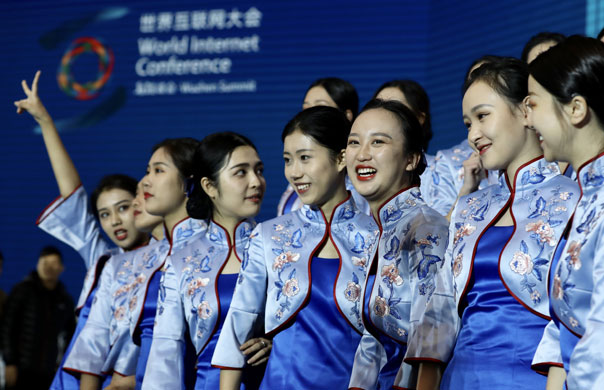More investment potential
 |
|
DOING BUSINESS IN CHINA: Workers toil away at an Amazon warehouse in Kunshan, east China's Jiangsu Province, on January 16, 2012 [Photo/bjreview.com.cn] |
At the recently concluded fifth meeting of the China-US Strategic and Economic Dialogue (S&ED), it was noted in one report that, "China and the United States recognize that a bilateral investment treaty (BIT) that sets high standards, including openness, non-discrimination and transparency, would be important to both sides, and welcome the progress made in the BIT negotiations to date. The two sides reaffirm their shared commitment to enhance openness, accord fair and equitable treatment, and contribute to the reduction or elimination of discriminatory practices and market barriers. After nine rounds of technical discussions, China is to enter into substantive BIT negotiations with the United States."
These words, one of the more enticing from the meeting, mark a new round of BIT talks between the two countries, which began in 2008.
An urgent need
Bilateral treaties can better meet the demands of countries concerned than an international law. Since a consensus on an international investment law has not yet been reached among international organizations, BIT is still playing an indispensable role in the protection of international investment. For this reason, BIT has been the first choice for capital exporting countries, including Britain and the United States as well as emerging investors like China, to protect their outward direct investment. Capital-rich and hi-tech investors tend to ensure that they are under the wing of BITs before making investment decisions. When the reform and opening-up policy was first put into practice, nearly 20 Western countries signed BITs with China. Foreign direct investment then began to flood into the world's largest developing country.
As a rising power of outward direct investment, Chinese investors as well as the Chinese Government are calling for amendments to BITs to improve the system for protecting their investments abroad. However, China is lagging far behind on this front. It signed the Encouraging Investment Agreement and Exchange of Note on Investment Insurance and Guarantee Between the People's Republic of China and the United States of America as early as October 30, 1980, and then reached similar bilateral agreements with more than 100 countries. Yet, most of these treaties are congenitally deficient. Moreover, China's rapid social and economic development has outpaced the improvement of these agreements.
Counting in polite formula, the Agreement and Exchange of Note includes only eight terms, nothing but making sure that the investment insurance and guarantee system of private American overseas investment companies can be applied to American companies' investments in China. Obviously, the agreement cannot effectively regulate and protect mutual investment between the two countries any more.
For Chinese companies, the United States has become an investment destination with the most political risks among developed countries. Since China began to directly invest in the United States in the early 1990s, Chinese companies have been dispirited again and again in their attempts to invest in the United States. As a result, there is a gap between China's direct investment in the United States and America's direct investment in China.
According to the 2011 Statistical Bulletin of China's Outward Foreign Direct Investment, China's total direct investment in the United States at the end of 2011 was a mere $8.99 billion. Specifically, direct investment in the United States amounted to $1.81 billion in 2011 and $2.62 billion in 2012.
While politics has been a factor, the absence of a new China-US investment treaty should also be blamed for the low numbers.
The China-US BIT talk will not just affect investments between the two countries. For one thing, China has been the most popular investment destination among developing countries for over two decades, and now it's also the most eye-catching emerging exporter of direct investment; for another, the United States has been both the top exporter and destination of direct investment for decades.
Considering that China is in urgent need to sign and amend BITs with almost all major trade partners, and the United States has been the most influential country in molding international economic and trade rules since World War II, the China-US BIT could be an example for similar agreements between China and its other trade partners.

























